NC Cotton Insect Scouting Guide
go.ncsu.edu/readext?646266
en Español / em Português
El inglés es el idioma de control de esta página. En la medida en que haya algún conflicto entre la traducción al inglés y la traducción, el inglés prevalece.
Al hacer clic en el enlace de traducción se activa un servicio de traducción gratuito para convertir la página al español. Al igual que con cualquier traducción por Internet, la conversión no es sensible al contexto y puede que no traduzca el texto en su significado original. NC State Extension no garantiza la exactitud del texto traducido. Por favor, tenga en cuenta que algunas aplicaciones y/o servicios pueden no funcionar como se espera cuando se traducen.
Português
Inglês é o idioma de controle desta página. Na medida que haja algum conflito entre o texto original em Inglês e a tradução, o Inglês prevalece.
Ao clicar no link de tradução, um serviço gratuito de tradução será ativado para converter a página para o Português. Como em qualquer tradução pela internet, a conversão não é sensivel ao contexto e pode não ocorrer a tradução para o significado orginal. O serviço de Extensão da Carolina do Norte (NC State Extension) não garante a exatidão do texto traduzido. Por favor, observe que algumas funções ou serviços podem não funcionar como esperado após a tradução.
English
English is the controlling language of this page. To the extent there is any conflict between the English text and the translation, English controls.
Clicking on the translation link activates a free translation service to convert the page to Spanish. As with any Internet translation, the conversion is not context-sensitive and may not translate the text to its original meaning. NC State Extension does not guarantee the accuracy of the translated text. Please note that some applications and/or services may not function as expected when translated.
Collapse ▲Cotton insect scouting is the regular and systematic inspection of cotton for insects and their damage. Its purpose is to obtain an accurate estimate of the types and numbers of important insects and their damage in the field by checking a limited number of plants or plant parts.
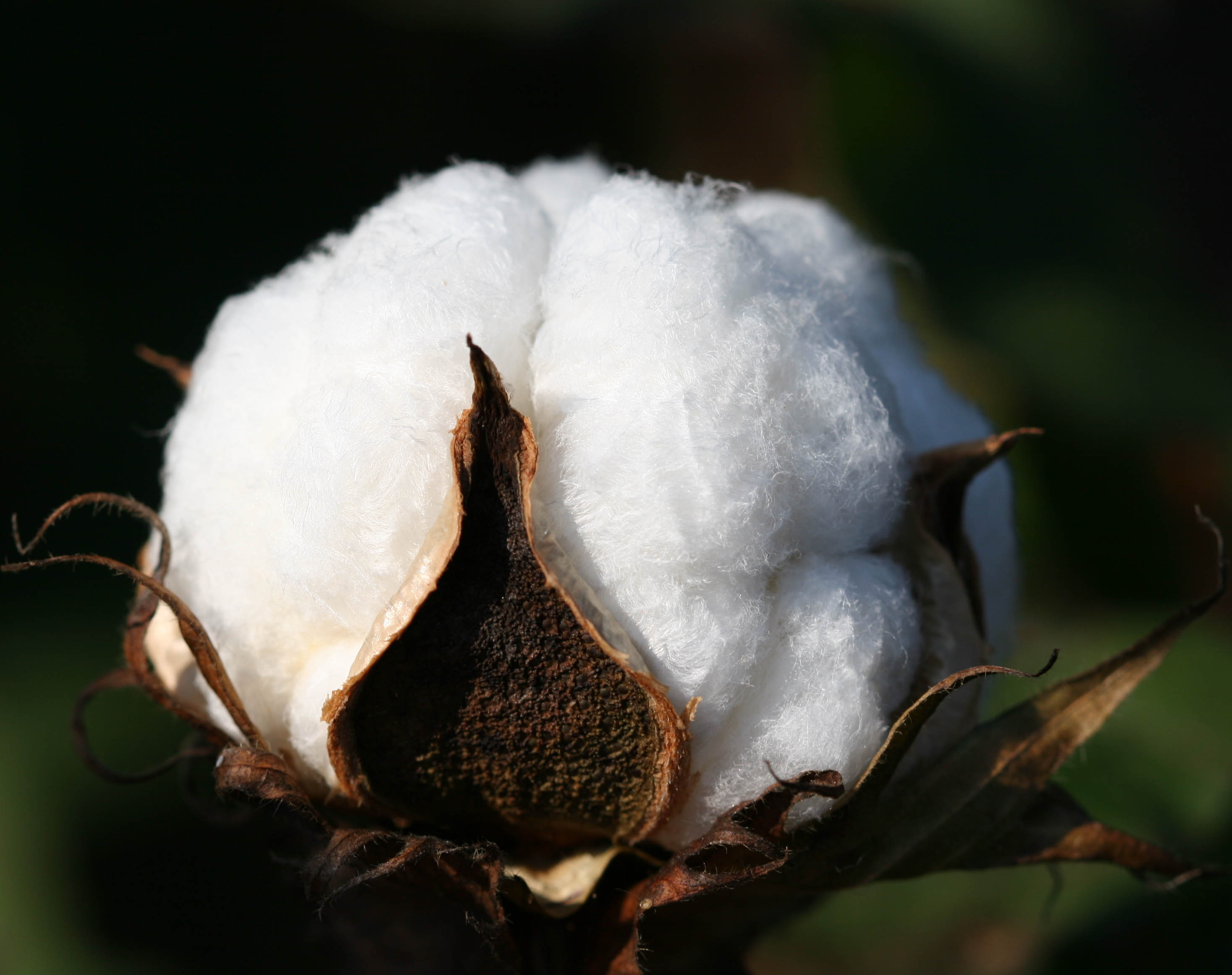 Judgments are made about managing insects in the whole field(s) from these small insect and/or plant samples. Therefore, following prescribed scouting procedures and taking an adequate sample size is important. Because insect pests can be very damaging to cotton, scouting is a must. Unscouted cotton usually costs the grower substantially, either through yield losses or unnecessary insecticide applications, neither of which is acceptable.
Judgments are made about managing insects in the whole field(s) from these small insect and/or plant samples. Therefore, following prescribed scouting procedures and taking an adequate sample size is important. Because insect pests can be very damaging to cotton, scouting is a must. Unscouted cotton usually costs the grower substantially, either through yield losses or unnecessary insecticide applications, neither of which is acceptable.
By knowing the kind, number, and location of insects and their damage within afield, the producer or consultant can make sound decisions about insect management and can often save several times the cost of scouting.
Key Cotton Pests
Miscellaneous Cotton Pests
Beneficial Insects
About two dozen beneficial insects and arthropods commonly occur in North Carolina cotton. Ambush bugs, damsel bugs, big-eyed bugs, minute pirate bugs, green lacewings, ladybird beetles, and several types of spiders are examples. There are of two types: predators that prey on an insect and parasites that live within and kill the host insect.
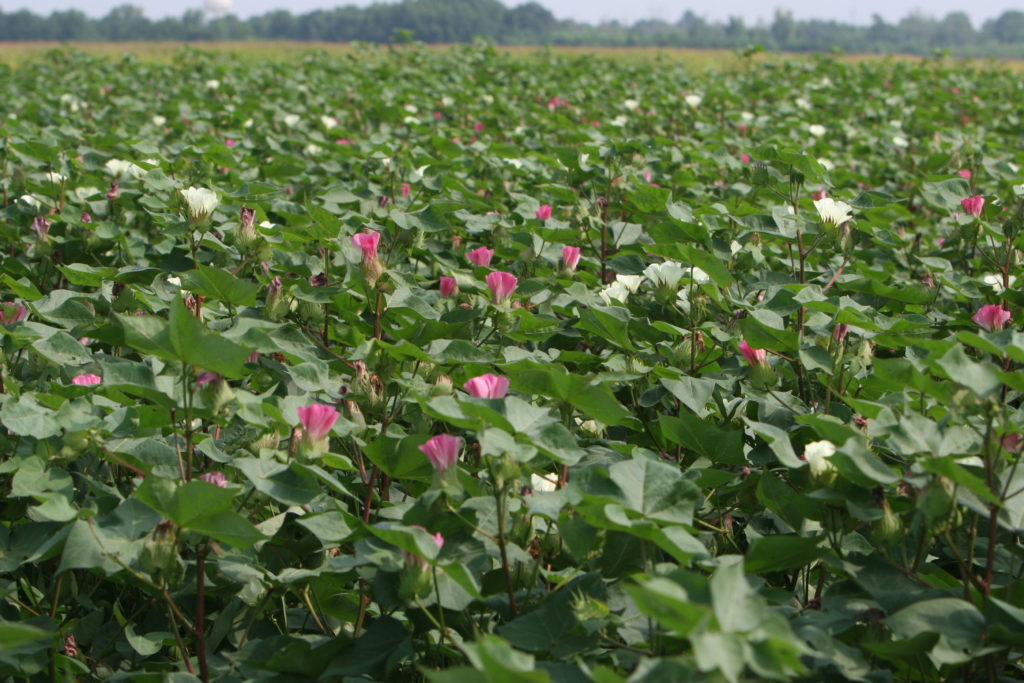 These insects, particularly the predators, reduce the numbers of eggs and larvae of tobacco budworms, bollworms, and other caterpillars. Aphids in North Carolina are largely held in check by beneficial insects and fungi. Stink bugs, in general, appear to have fewer natural enemies than the above-mentioned insects. Because these “beneficials” lessen the impact of pest insects, it is common sense for producers to use them as a management tool. Their presence means that growers can sometimes delay, and occasionally eliminate, some insecticide applications.
These insects, particularly the predators, reduce the numbers of eggs and larvae of tobacco budworms, bollworms, and other caterpillars. Aphids in North Carolina are largely held in check by beneficial insects and fungi. Stink bugs, in general, appear to have fewer natural enemies than the above-mentioned insects. Because these “beneficials” lessen the impact of pest insects, it is common sense for producers to use them as a management tool. Their presence means that growers can sometimes delay, and occasionally eliminate, some insecticide applications.
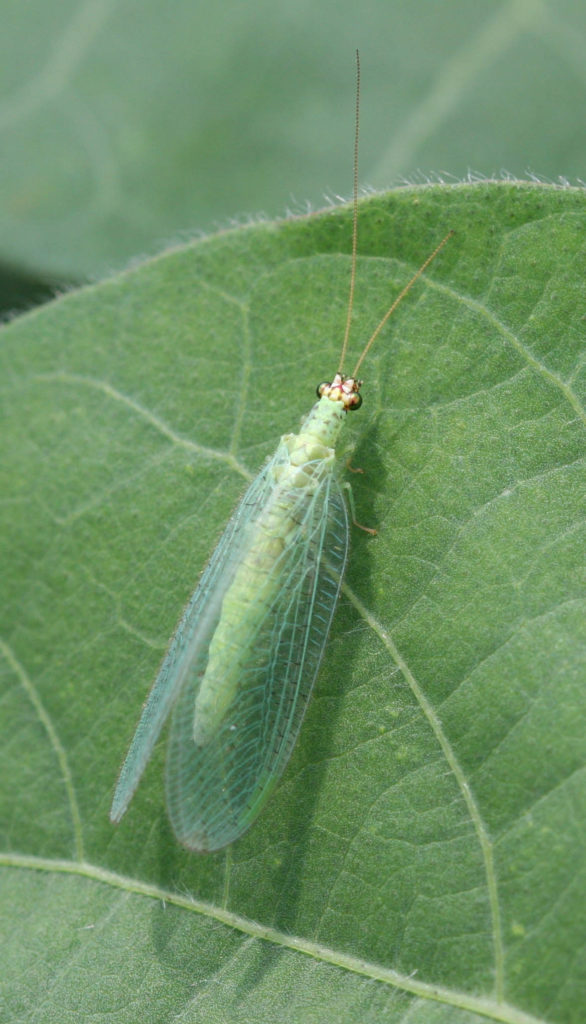 Many complex factors are involved in determining just how many of each beneficial insect species would be needed to influence a given level of pests. Therefore, it is not possible to assess the value of these insects except in a very general way. If relatively large numbers of beneficial insects are consuming a large proportion of bollworm eggs and larvae, for example, the treatment threshold will be reached later than would otherwise be the case, at times either delaying the initial application or even reducing the number of insecticide applications needed. The careful observation of sound economic thresholds, along with assessments of key beneficial insects, offers the producer the best odds of balancing beneficial insect numbers against damaging insects.
Many complex factors are involved in determining just how many of each beneficial insect species would be needed to influence a given level of pests. Therefore, it is not possible to assess the value of these insects except in a very general way. If relatively large numbers of beneficial insects are consuming a large proportion of bollworm eggs and larvae, for example, the treatment threshold will be reached later than would otherwise be the case, at times either delaying the initial application or even reducing the number of insecticide applications needed. The careful observation of sound economic thresholds, along with assessments of key beneficial insects, offers the producer the best odds of balancing beneficial insect numbers against damaging insects.
Black-Light Trapping
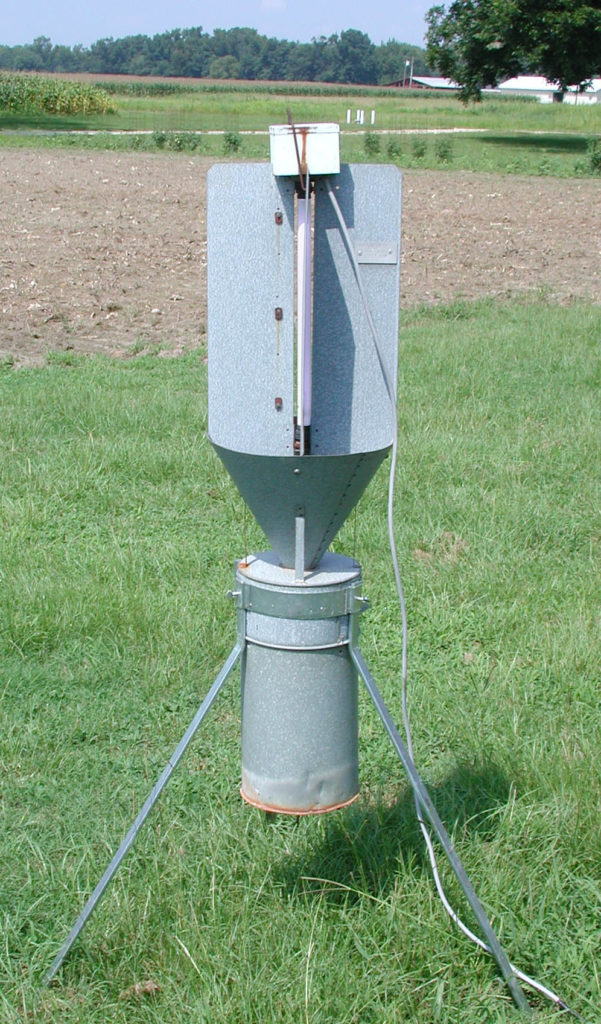 Black lights (UV lights) are an important tool for detecting both sexes of bollworm adults as well as some other moths and a few other insect species. The third and largest flight of bollworm moths begins from mid-July to early August in North Carolina. The use of black-light traps provides information on the timing and relative intensity of this flight. Traps should be checked three times a week from early July through August to keep abreast of the timing and intensity of the bollworm moth flights. The downside of these traps is their expense, lack of portability, requirement of a source of electricity, and attractiveness to a variety of unwanted insects such as beetles, which can render some of the captured moths unrecognizable. NC State Extension maintains a Light Trap Data network during the season.
Black lights (UV lights) are an important tool for detecting both sexes of bollworm adults as well as some other moths and a few other insect species. The third and largest flight of bollworm moths begins from mid-July to early August in North Carolina. The use of black-light traps provides information on the timing and relative intensity of this flight. Traps should be checked three times a week from early July through August to keep abreast of the timing and intensity of the bollworm moth flights. The downside of these traps is their expense, lack of portability, requirement of a source of electricity, and attractiveness to a variety of unwanted insects such as beetles, which can render some of the captured moths unrecognizable. NC State Extension maintains a Light Trap Data network during the season.
Pheromone Trapping
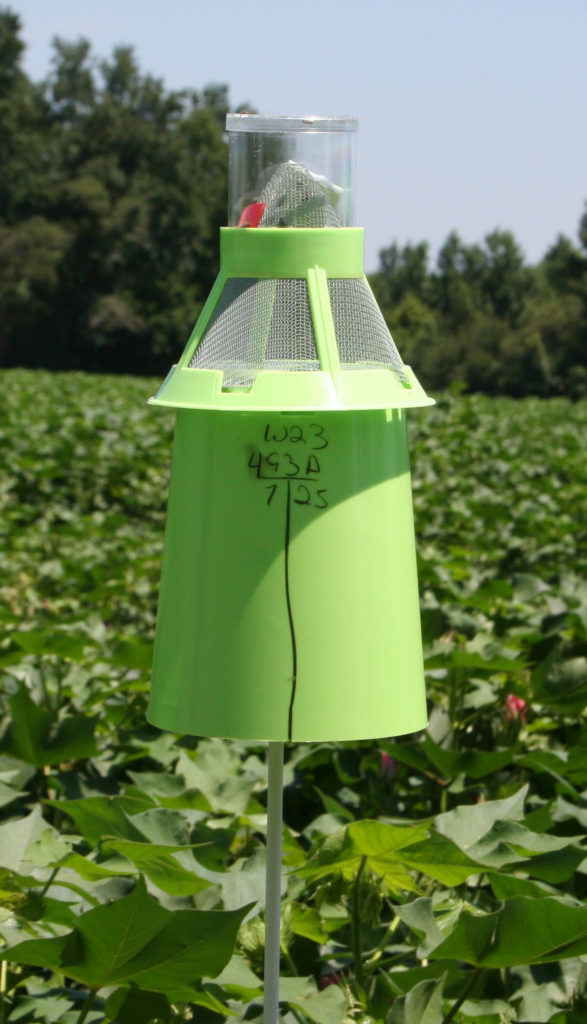 Pheromone traps typically use the synthesized scent of one sex of an insect to attract either both sexes (e.g., boll weevils) or the opposite sex (most moths). Synthesized pheromone of female bollworms, tobacco budworms, European corn borers, other moths, and brown stink bugs, which attracts males of the respective species, is available commercially. These traps have several advantages over light traps – namely lower expense and relative portability. Pheromone traps also lend themselves to placement in remote areas. However, pheromone traps are also more localized in their attractiveness and can be inconsistent in reflecting the adult flights. Average captures from clusters of traps (e.g., 10 or more traps in a cotton production area) may provide a more accurate sample of moth flight activity than individual traps or smaller clusters.
Pheromone traps typically use the synthesized scent of one sex of an insect to attract either both sexes (e.g., boll weevils) or the opposite sex (most moths). Synthesized pheromone of female bollworms, tobacco budworms, European corn borers, other moths, and brown stink bugs, which attracts males of the respective species, is available commercially. These traps have several advantages over light traps – namely lower expense and relative portability. Pheromone traps also lend themselves to placement in remote areas. However, pheromone traps are also more localized in their attractiveness and can be inconsistent in reflecting the adult flights. Average captures from clusters of traps (e.g., 10 or more traps in a cotton production area) may provide a more accurate sample of moth flight activity than individual traps or smaller clusters.
NC Cotton Thresholds
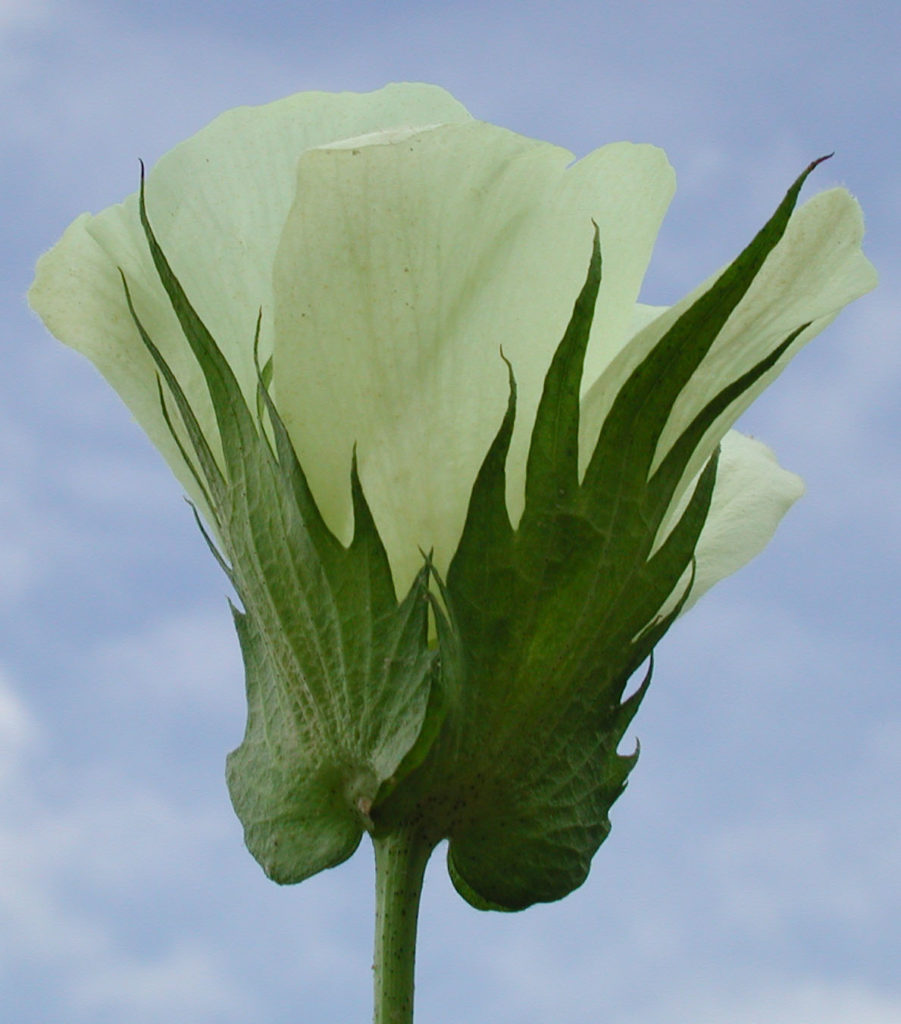 A threshold is the level of plant damage or the number of insects at which treatment is recommended – hopefully the point at which the benefits of control will outweigh the costs. Threshold numbers are usually expressed in terms of the percentage or number of insects or instances of injury or damage seen per 100 forms inspected. Based upon years of research, these thresholds form the basis for sound treatment decisions.
A threshold is the level of plant damage or the number of insects at which treatment is recommended – hopefully the point at which the benefits of control will outweigh the costs. Threshold numbers are usually expressed in terms of the percentage or number of insects or instances of injury or damage seen per 100 forms inspected. Based upon years of research, these thresholds form the basis for sound treatment decisions.
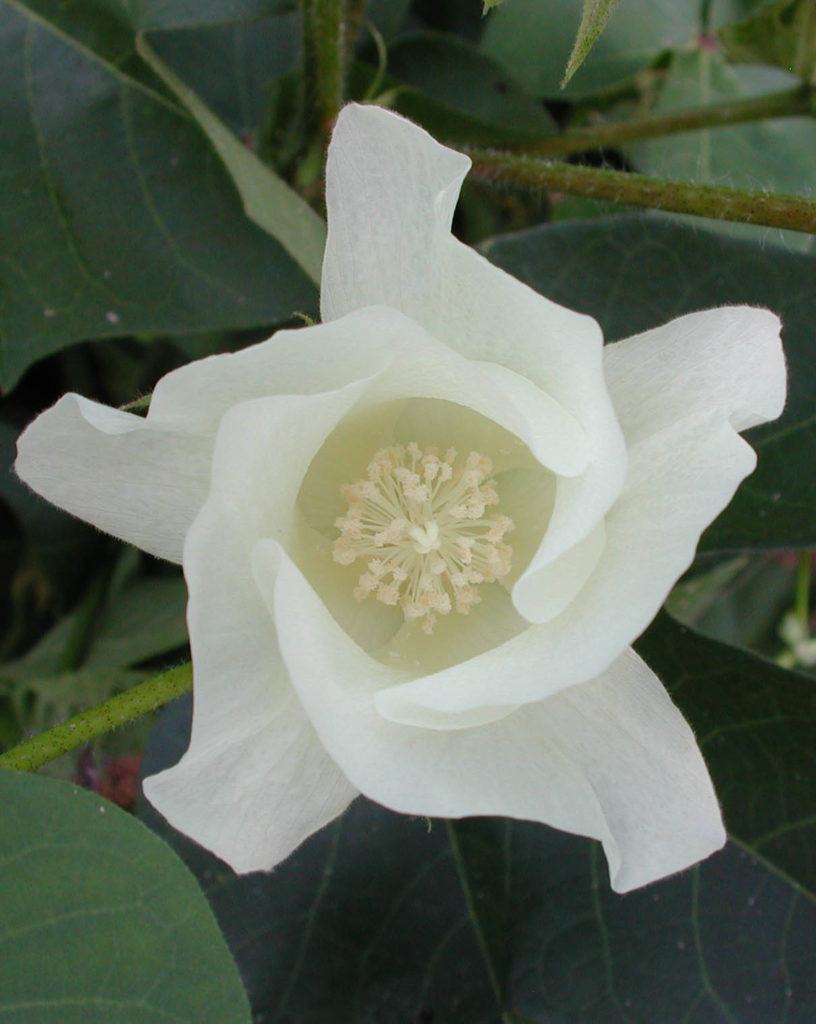 Thresholds, however, are only general guidelines applicable to the entire state. A knowledgeable consultant or advisor may be able to modify a threshold, depending on the region of the state, its past history of insect problems, the weather, the amount of risk that the farmer is willing to take, the producer’s management capabilities, and other circumstances. Also, these thresholds are periodically refined on the basis of new research results or changes in the status and behavior of the various pests.
Thresholds, however, are only general guidelines applicable to the entire state. A knowledgeable consultant or advisor may be able to modify a threshold, depending on the region of the state, its past history of insect problems, the weather, the amount of risk that the farmer is willing to take, the producer’s management capabilities, and other circumstances. Also, these thresholds are periodically refined on the basis of new research results or changes in the status and behavior of the various pests.
Current Thresholds for Cotton Pests
Thrips
Cotyledon through the 4 true leaf stage:
- An average of 2 immature thrips per plant.
- Alternatively, an average of 1 immature thrips per plant for each true leaf.
(Timing of thrips applications, especially following seed treatments, is often best targeted to the 1st true leaf stage).
Do not treat ThryvOn cotton for thrips.
Bollworm
Bollgard II, TwinLink, WideStrike:
- 25 total eggs on 100 leaves or fruiting structures (search throughout the canopy on multiple plants)
Bollgard 3, TwinLink Plus, WideStrike 3:
- 3 live second-stage bollworms (1/8 inch or longer) per 100 fruit (pay particular attention to bollworms in or under yellow, pink, or dried blooms stuck to young bolls), or
- 2 second-stage bollworms on 2 consecutive scouting trips, or
- 1 second-stage bollworm on 3 consecutive scouting trips
Stink Bugs
Use thresholds of 50, 20, 10, 10, 10, 20, 30 and 50% internal injury to quarter-sized bolls (count warts and stained lint) during weeks 1 to 8 of the bloom period, respectively (see Table 1).
| Week of bloom | Threshold |
|---|---|
| 1 | 50 |
| 2 | 30 |
| 3 | 10 |
| 4 | 10 |
| 5 | 10 |
| 6 | 20 |
| 7 | 30 |
| 8 | 50 |
Table 1. Suggested threshold based on week of bloom. Weeks 3 through 5 of the bloom, constitute the period of high boll vulnerability to stink bug injury and yield loss.
Tarnished Plant Bugs
Pre-bloom: Tarnished plant bug sweeping is advised where retention of young terminal and lateral squares in pre-bloom cotton is less than 80 percent. Sample at least 12 locations in the field.
- 8* plant bugs per 100 sweeps (from initiation of squaring until the first or second week of blooming).
*The sweep net threshold may be raised to 10 if fruiting begins on node 4 through 6, or lowered to 6 or 7 if fruiting has begun on node 8 or higher. Thresholds also may be lowered somewhat in stressed cotton.
Post-bloom: Post-bloom thresholds begin approximately 1 to 2 weeks after bloom initiation. Sample at least 10 locations in the field.
- 2-3** adult plus nymph stage plant bugs per 5 row feet taken from 6 to 8 location in the field.
** Use 2.5 foot black beat cloth between two adjacent cotton rows.
These thresholds include both non-ThryvOn and ThryvOn cotton.
Cotton Aphids
Treat at a rating of 4 (shown below) in opening cotton (15 percent open bolls or greater) or a rating of 5 in pre-opening cotton if plants are under stress and beneficial insects and fungi are at low levels.
Treatment is discouraged under most circumstances if predators and/or parasites appear to be exerting a significant controlling effect on aphid populations, or if the aphid parasitic fungus is present at any level. In opening cotton, treat only if plants are heavily infested and honeydew is detected in significant portions of the field.
The aphid rating scale may help define situations where treatment for aphids may be indicated. In North Carolina, cotton aphid populations in a given area may be resistant to most commercially labeled insecticides.
Aphid Rating Scale
0. No aphids.
1. Occasional plants with low numbers of aphids.
2. Plants with low numbers common; heavily infested plants rare; honeydew visible occasionally.
3. Most plants with some aphids; occasional plants heavily infested; honeydew visible in spots throughout the field.
4. Heavily infested plants common; aphids clumped on upper leaves; honeydew present in much of the field.
5. Many heavily infested plants and honeydew throughout the field.
Two-Spotted Spider Mite
General leaf discoloration (chlorosis, bronzing, or both), plus live mites over most of the field and defoliation from mites in 25 percent or more of the field. (If rain is imminent, delay treatment and reevaluate 3 to 4 days after the rain. If a miticide is used, 2 applications are sometimes necessary.)


